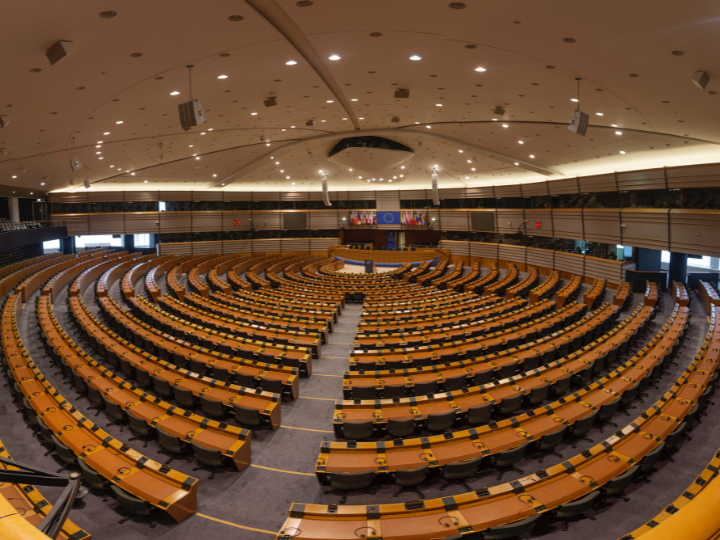by Francisco Betti and Radu Palamariu*
We live in one the most exciting ages ever – the age of the Fourth Industrial Revolution (4IR). Digital transformation, and technology more broadly, increasingly form an integral part of life, giving humanity a unique opportunity to rethink and redesign the way they source, produce, deliver, and consume. And this is not only to boost productivity and growth, but also to generate new value for workers, society and the environment.
Manufacturing accounts for about 22% of global employment, yet the majority of manufacturing companies still lack a clear strategy on how best to equip their workforce with the required capabilities for this new age. The 4IR could lead to the displacement of an estimated 75 million jobs worldwide in the next four years. At the same time, it is expected that new opportunities could create 133 million new jobs – a net positive of 58 million new 4IR roles by 2022.
So, how can organizations thrive in the age of the 4IR? The answer is simple: the future of manufacturing is not just about technology, it’s about developing both technology and people. Here are three manufacturing best practices that optimize both the skills of people and the use of machines:
1) Talent attraction and engagement
While technology has made everything more efficient, it is usually by adding a mix of talent and skills that companies are successful. All systems, processes and technologies fall flat when we don’t have the right people to work with them. Now, more than ever, organizations need to hire the best talent available and build a strong employer brand. Moreover, companies need to actively engage their employees in the design and implementation of their digital strategies – from senior management to shopfloor staff. This will ease technology adoption throughout the organization, rather than pushing through acceptance of new systems and tools from the top down.
When brewing company Heineken wanted to highlight the importance it places on its people, it created a series of videos featuring the stories of current Heineken employees that work in a variety of positions and locations. The intent and effect of the campaign was to show that the brand revolves around the unique personalities and ambitions of the employees.
General Electric (GE) also repositioned itself as a digital industrial company with an employer branding strategy using modern commercials. One of these videos, “What if Millie Dresselhaus, Female Scientist, Was Treated Like a Celebrity?”, attracted lots of social media views and engagement for the multinational conglomerate.
2) Upskilling and reskilling
Manufacturing skills can have a short life cycle of about 5 years. This means the skills workers learnt a decade ago have most likely become obsolete as companies try to deploy digital transformation strategies. Organizations need to invest in providing continuous learning opportunities to upskill and reskill their employees. This should also drive a cross-company mindset change and take cross-team collaboration to new levels.
For example, Indian steel producer Tata Steel Kalinganagar (TSK) has developed a highly sophisticated training strategy as part of its aspiration to transform into what it calls a “self-sustaining digital organization”. TSK believes digital will become a “way of life” and crucial to all transformations in coming years. To ensure it has the necessary human resources, the organization has developed a three-pronged, integrated approach for employee capability-building using a combination of academies, experiential learning on projects and self-learning modules.
3) Strengthening supply networks
Forget about departments working in silos. Due to the complexity of the new disruptions that manufacturing companies will continue to face in this new age – from pandemics to climate change – no organization can work alone anymore. Bringing suppliers on board and developing support skills across the entire supply network is going to be critical as companies transform value chains end-to-end and develop new customer experiences.
Establishing a new degree of collaboration and integration at a network level enables the sharing of best practice, accelerating the learning curve and helping organizations thrive together. Collaboration with other actors outside the ecosystem will also play a critical role going forward, for example engaging with research institutions or governments to support talent development efforts.
Tool manufacturer Stanley Black & Decker for example, hosts local high school teachers during the summer holiday break. By working with those teaching subjects related to its industry, it can support workplace learning by providing direct experience about trends, skill requirements, new technologies and opportunities.
This initiative enriches and strengthens their teaching, making it more relevant to students’ potential college and career choices. During these month-long externships, teachers shadow the Stanley Black & Decker Industry 4.0 team as they deploy digital technologies across their global manufacturing network. These teachers gain exposure to supply-chain and distribution operations, as well as the company’s corporate social responsibility efforts.
In another example of this kind of best practice, Turkish automotive joint venture Ford Otosan not only provides training for its employees, but also its suppliers. It does this regularly for 25 different topics. It also educates suppliers about the 4IR by, first assessing their knowledge, and then inviting them to send their employees for technical plant tours to expand their awareness.
In this new age, the most successful companies will be those approaching the future of manufacturing and operations with a human-led and a human-centered approach. This is a philosophy that is already embraced by Toyota among other Japanese firms, when they discuss "giving wisdom to the machine”.
We look forward to seeing more companies embarking on this journey of 4IR transformation by using the people-machine combination to their best advantage.
*Head of Shaping the Future of Advanced Manufacturing & Value Chains; ExCom Memb, World Economic Forum and Managing Director Asia Pacific& Chief Energy Officer, Alcott Global
**first published in: www.weforum.org




 By: N. Peter Kramer
By: N. Peter Kramer

